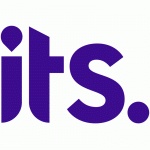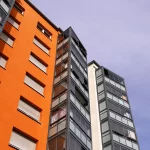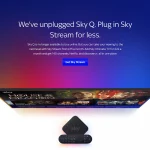BT See Rise in Ultrafast Broadband Cover to 3.7 Million UK Premises
BT Group has today published their latest results to the end of June 2019 (Q1 19/20 financial), which reveals that Openreach’s FTTP and G.fast based “ultrafast broadband” (100Mbps+) ISP networks have grown their coverage to 1.51 million and 2.16 million UK premises respectively (overall total of 3.7m, up from 3.2m last quarter).
Since the last results BT and its siblings have made a lot of announcements. We’ll try to keep this short by focusing upon only the biggest developments, which started with our leak of Openreach’s plan to trial symmetric speed 1Gbps FTTP services (here) and they’re also about to cut their wholesale prices, which will include new 500Mbps and 1Gbps packages for consumers (here).
Elsewhere BT is set to move their London HQ (here), launched 5G mobile via EE and could cut their dividend in order to help fund the FTTP rollout to 15 million premises by around 2025 (here). Ofcom also found that BT had made good progress on their legal separation from Openreach but they still want to see more details on their full fibre rollout plan (here). We also note that Ofcom are probing BT’s Excess Construction Charges (here).
Advertisement
Meanwhile Openreach has revised their G.fast/FTTC install options (here), appear to be pondering a plan to replace some of their ECI street cabinets with Huawei (here), have tweaked the minimum selling speed for G.fast lines from 100Mbps to 120Mbps – impacting coverage (here) – and have set out their plans to trial an FTTP exchange upgrade process as part of the move to retire copper services (here).
Now on to BT’s results..
Financial Highlights – BT’s Quarterly Change
* BT Group revenue = £5,633m (down from £5,853m)
* BT Group profit after tax = £505m (down from £513m)
* BT Group total net debt = -£17,805m (from -£11,035m)NOTE: Net debt was £17,805m at 30 June 2019, £6,770m higher than at 31st March 2019, primarily reflecting recognition of lease liabilities on transition to IFRS 16 on 1st April 2019. Excluding the IFRS 16 lease liability, net financial debt was £11,642m, £607m higher than at 31st March 2019. This increase was driven by the £1,250m pension deficit payments made this quarter, partly offset by operating cash flows.
We should add that BT’s assumptions about clawback / gainshare via the government’s Broadband Delivery UK roll-out programme remains unchanged (i.e. public money that can be returned and reinvested by local authorities to help “superfast broadband” coverage to reach around 98% of the UK by the end of 2020).
The operator’s previous “life-time view” of their BDUK linked contracts, which predicted that take-up of their FTTC/P network within related areas could eventually reach 61%, suggested that up to around £712m of public investment might eventually be returned for the above purpose (currently £667m).
Advertisement
BT Group’s Capital expenditure
Capital expenditure was £931m (2018/19: £839m), including network investment of £494m, up 15%. This includes £16m grant funding deferral under the Broadband Delivery UK (BDUK) programme, excluding the effect of this deferral, capital expenditure was £915m. The remaining increase in network investment reflects higher investment in 5G and our Fibre Cities programme, partially offset by lower spend on the Emergency Services Network (ESN).
Our BDUK Gainshare provision at the end of the quarter was £667m. Other capital expenditure components were up 6% with £236m spent on customer driven investments, £169m on systems and IT, and £32m spent on non-network infrastructure.
Sadly BT no longer provide customer figures for their own retail broadband ISP (likely covering up for declines), although it’s noted that 74.3% of their consumer broadband base now take a “superfast broadband” connection (up from 72.9% last quarter – mostly via FTTC) and this drops to just 1.1% (up from 0.8% last quarter) for their “ultrafast broadband” products. Remember, the latter have limited coverage and are fairly new.
Openreach’s Network Coverage
The table below offers a useful breakdown of fixed line network coverage and take-up by technology, which covers the totals for all ISPs on their national UK network combined (e.g. BT, Sky Broadband, TalkTalk, Zen Internet, Vodafone etc.). Overall the main takeaway from this is that their rollout of “full fibre” (FTTP) lines is now clearly the dominant deployment among their two “ultrafast broadband” technologies, with G.fast continuing to slow.
However it’s unclear whether the G.fast premises passed figures have been updated yet to reflect the recent change in minimum selling speed from 100Mbps to 120Mbps (here), which would surely reduce its availability to consumers. The G.fast rollout was already slowing in favour of FTTP but this could certainly have contributed to this quarters even slower progress.

Advertisement
We note that take-up of FTTP is 23.25% (down from 24.54% last quarter and 29.9% before that), while G.fast stands at 1.66% (up from 1.24% last quarter). However we would strongly caution readers not to misinterpret these change because such figures don’t tell the whole story.
At present both technologies are in their primary roll-out phases and take-up is a dynamically scaled measurement (impacted by the many different factors of consumer choice and awareness). This simply means that at certain stages of the rollout the figure for take-up may go up or even down, depending upon the pace of deployment.
We expect the overall take-up % for FTTP to fall as Openreach’s roll-out pace increases, not least because a big chunk of related lines were built well before the new “Fibre First” strategy began last year and this gave take-up a chance to grow. Balancing against this is the fact that FTTP is a more familiar and attractive product for consumers, while a lot of it is being deployed to new builds and BDUK areas (i.e. better for take-up).
On the flip side G.fast may have rising take-up but its deployment pace has slowed due to the re-focus toward FTTP. Equally G.fast has also suffered due to limited adoption by ISPs (e.g. Sky Broadband has yet to offer any ultrafast packages) and those that do offer such products don’t put much effort into advertising it (big commercial comparison sites ignore these). G.fast often also finds itself fighting against better plans from Virgin Media.
As usual our own ISP Listings page has been displaying both ultrafast broadband products for a long time because we don’t force ISPs to pay a commission in order to be shown, like big commercial comparison sites do.
Philip Jansen, CEO of BT Group, said:
“BT delivered results in line with our expectations for the quarter, with adjusted EBITDA declines in Consumer and Enterprise partly offset by growth in Global. We are on track to meet our outlook for the full year.
We made good progress during the quarter, including launching the UK’s first 5G network, delivering an improvement to our group net promoter score for the twelfth consecutive quarter, announcing the first nine cities in our consolidated office footprint, and being named the major broadband universal service obligation provider for the UK.
In building a better BT for the future we need to be even more competitive. We will continue to take decisive action, including on price, to further strengthen our customer propositions and market position, both to respond to any short-term market pressures and to capitalise on longer-term opportunities.
On network investment, we welcome the Government’s ambition for full fibre broadband across the country and we are confident we will see further steps to stimulate investment. We are ready to play our part to accelerate the pace of rollout, in a manner that will benefit both the country and our shareholders, and we are engaging with the Government and Ofcom on this.”
We also noted a few other bits of interesting news in BT’s results. Firstly, the operator confirmed that it would deliver most of next year’s 10Mbps+ Universal Service Obligation (USO) for broadband by using 4G based wireless connections and they added that 40,000 premises would be reached by fixed line broadband (FTTC/P).
Separately BT’s Enterprise (business) division claims to have “launched new fibre and digital phone line bundles” that are based on Openreach’s all-IP SOGEA capability, which is not something we’ve covered before but that would mark the first official ISP use of their new standalone broadband technology.
Meanwhile Openreach said they were now ahead on all of Ofcom’s 42 copper and fibre quality of service targets.
Mark is a professional technology writer, IT consultant and computer engineer from Dorset (England), he also founded ISPreview in 1999 and enjoys analysing the latest telecoms and broadband developments. Find me on X (Twitter), Mastodon, Facebook, BlueSky, Threads.net and Linkedin.
« Three UK in L-Band Rollout as Mobile Data Usage Per User Hits 9.1GB


















































Comments are closed